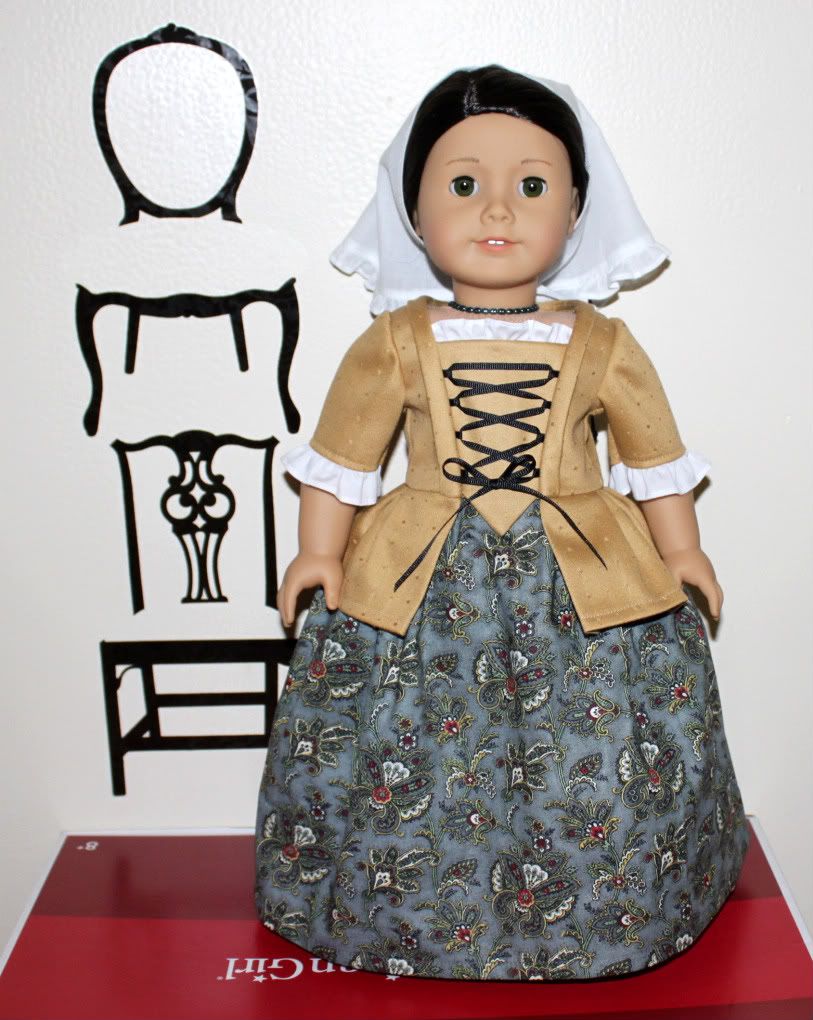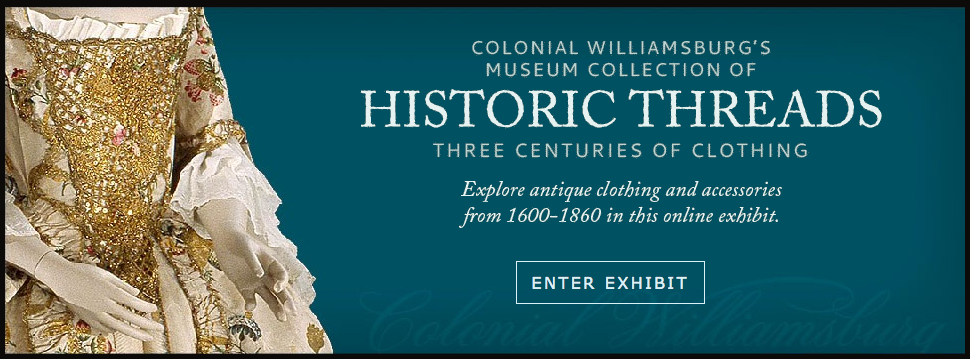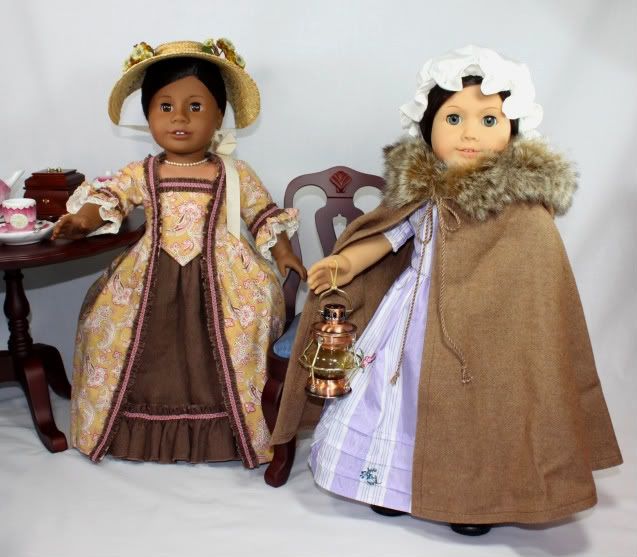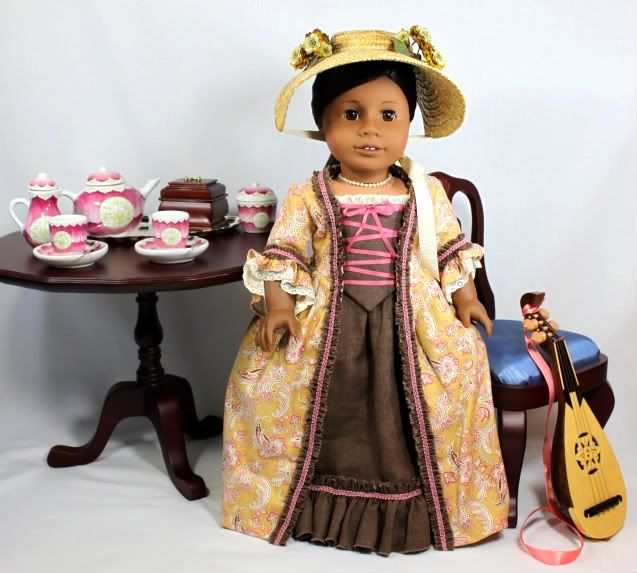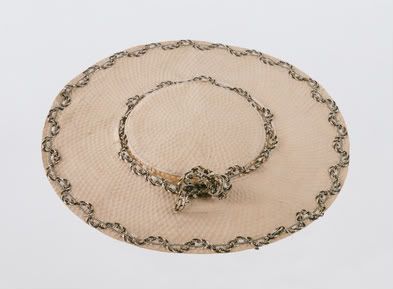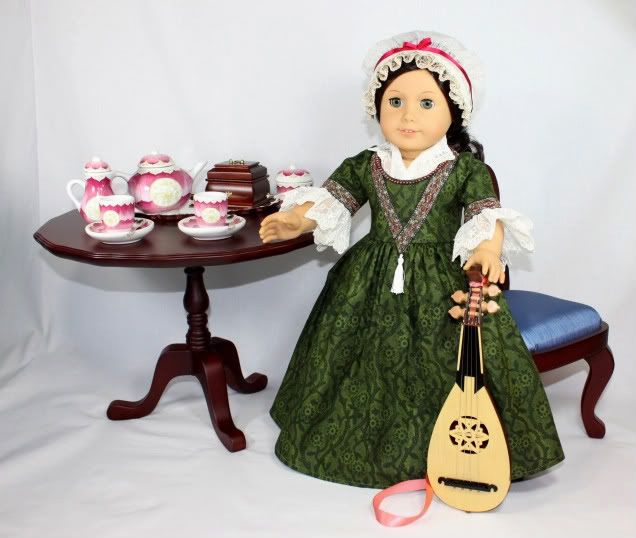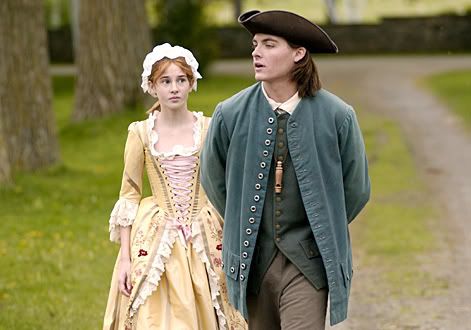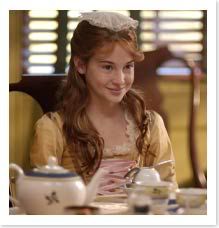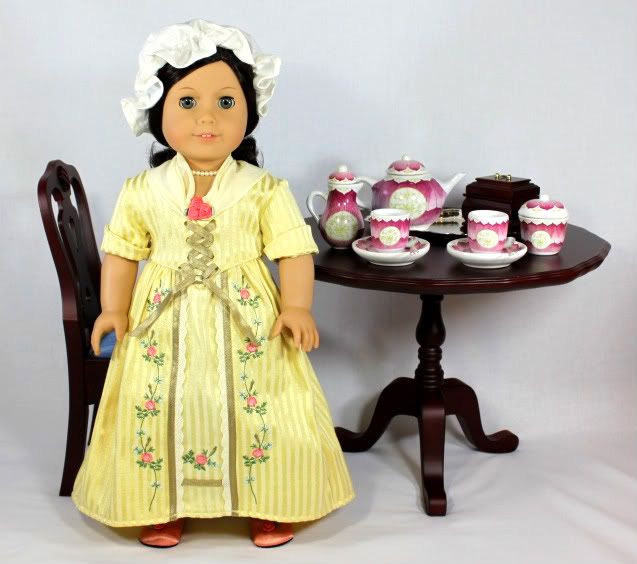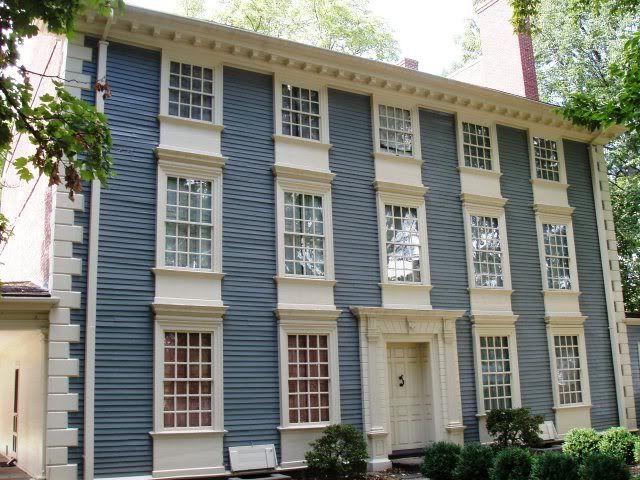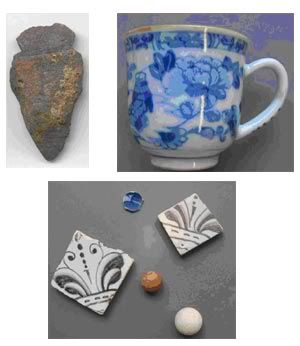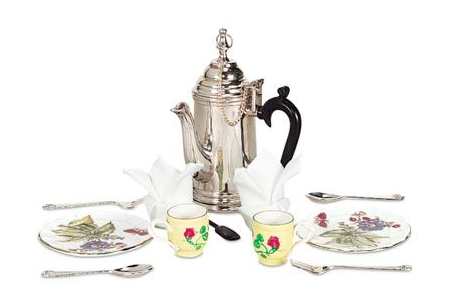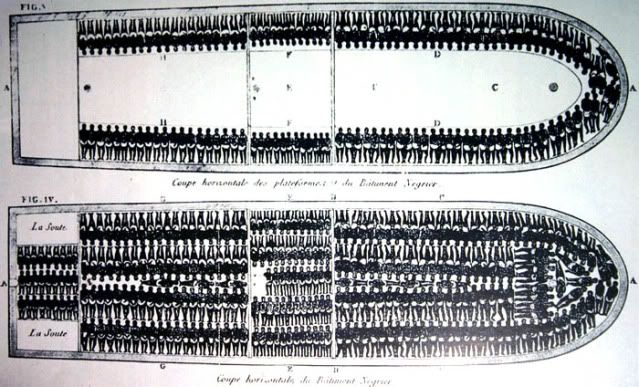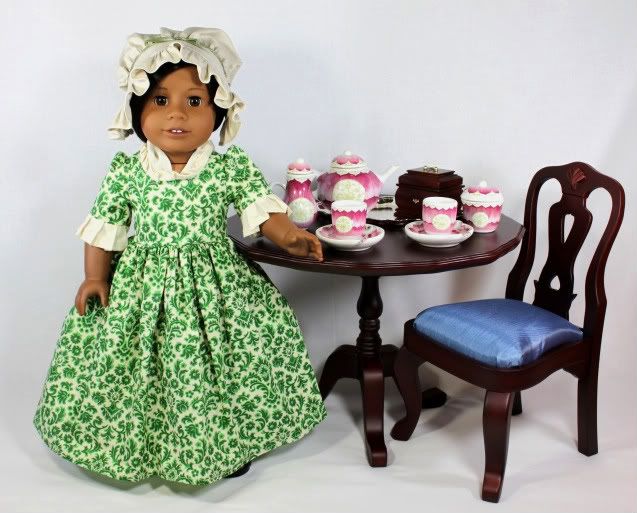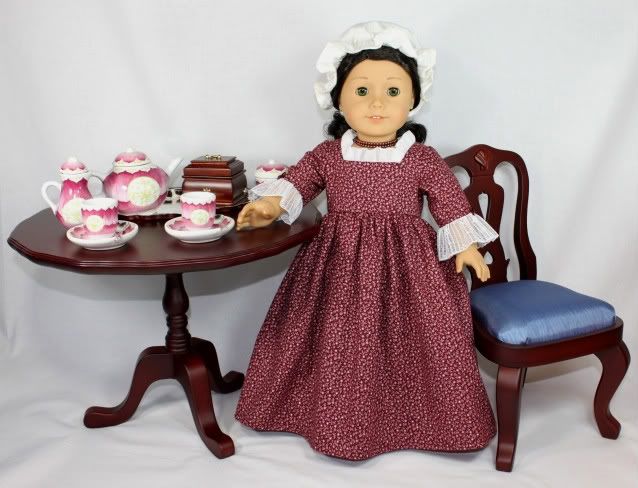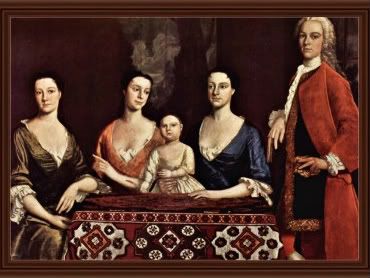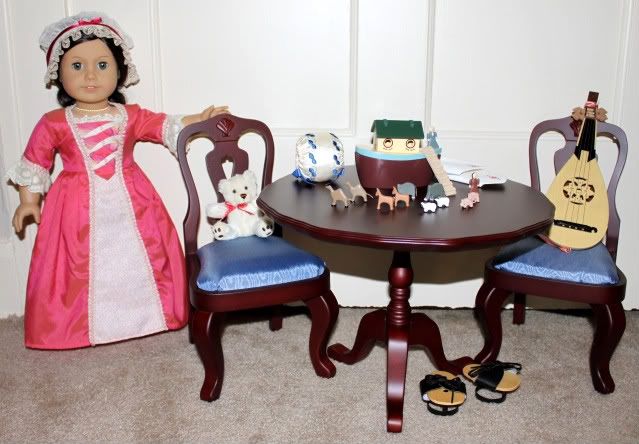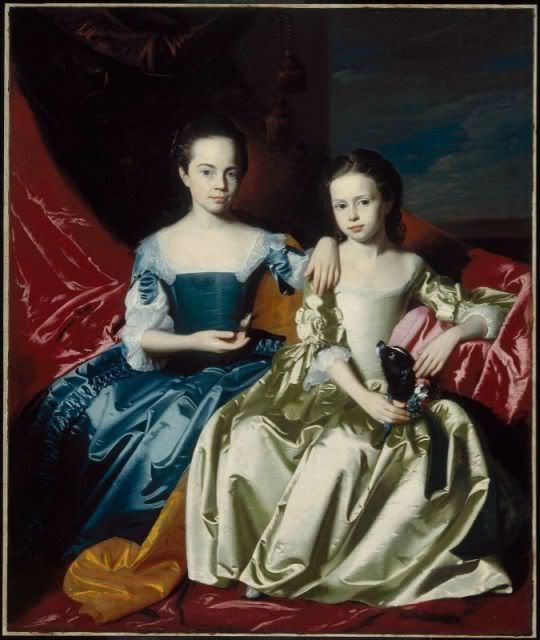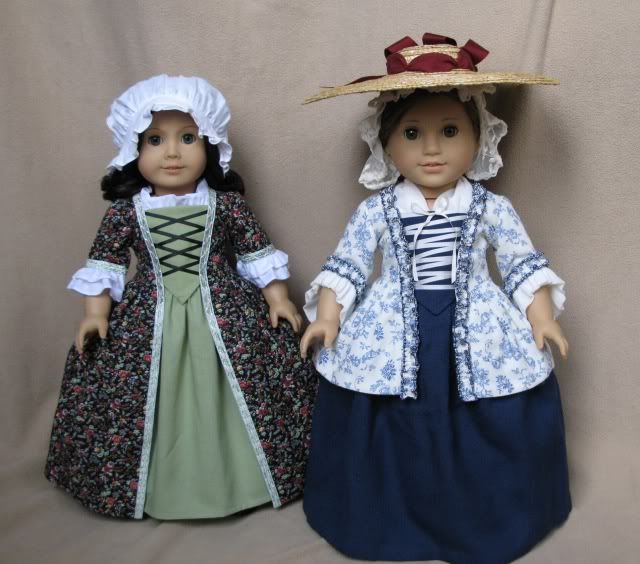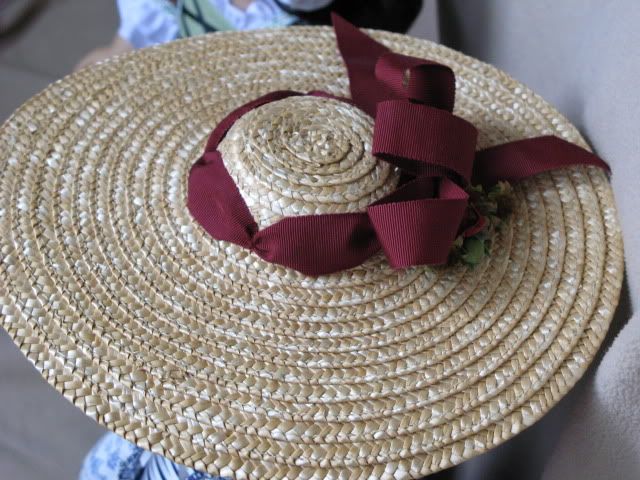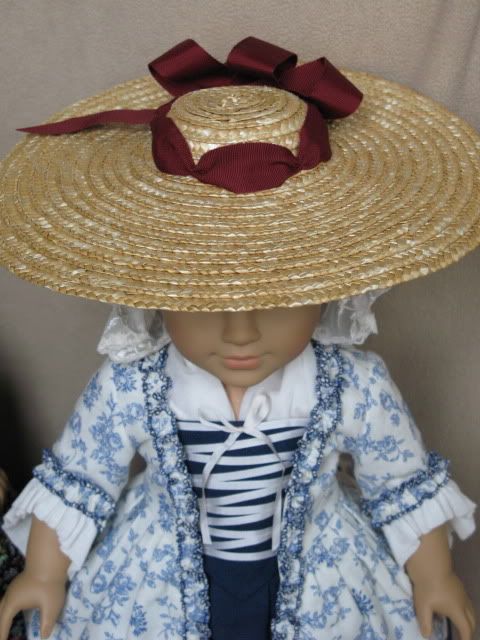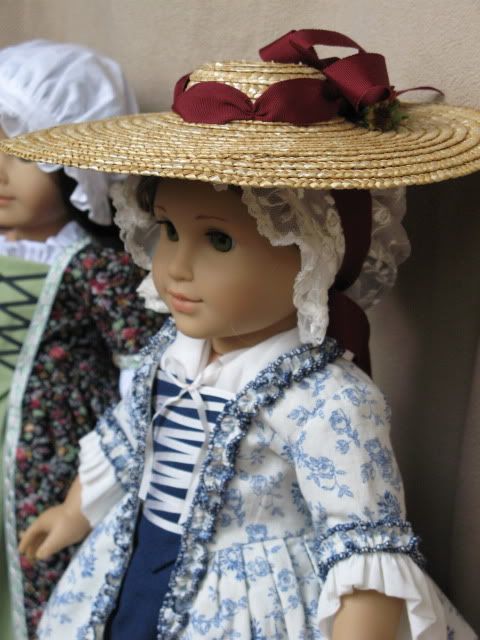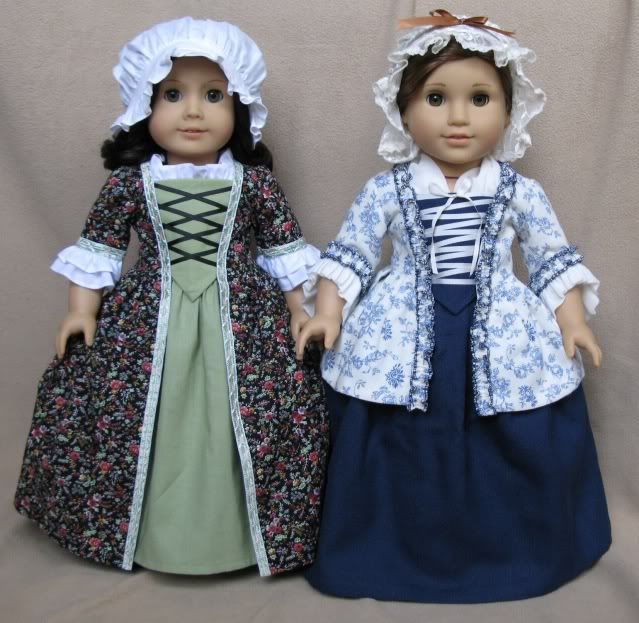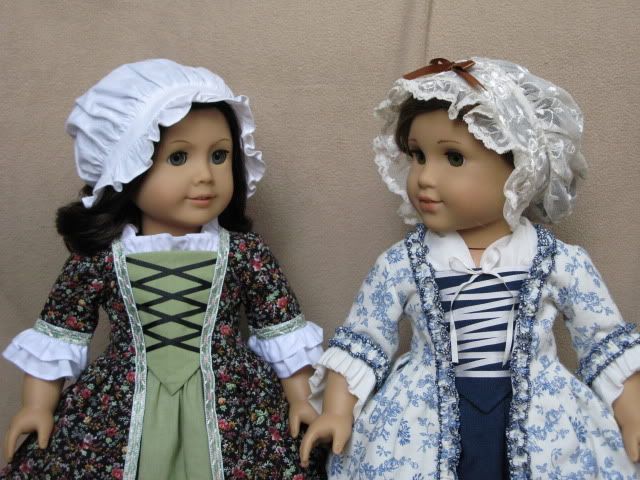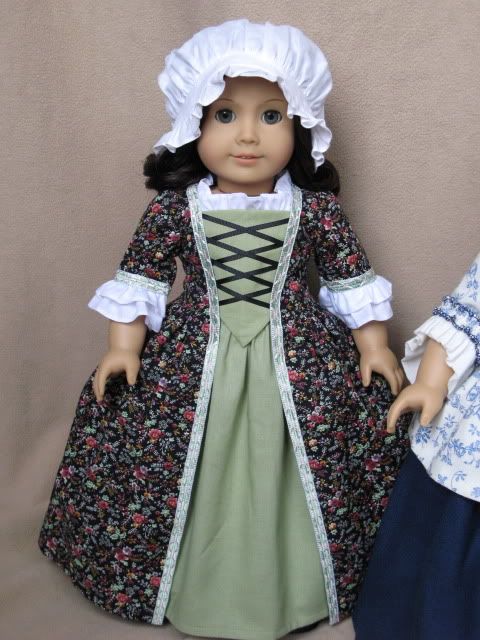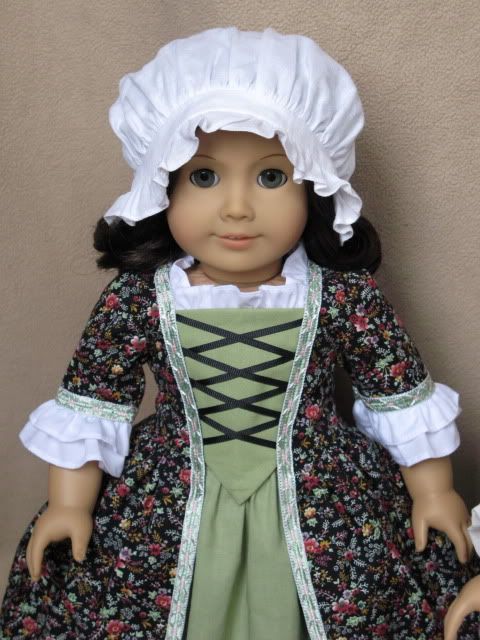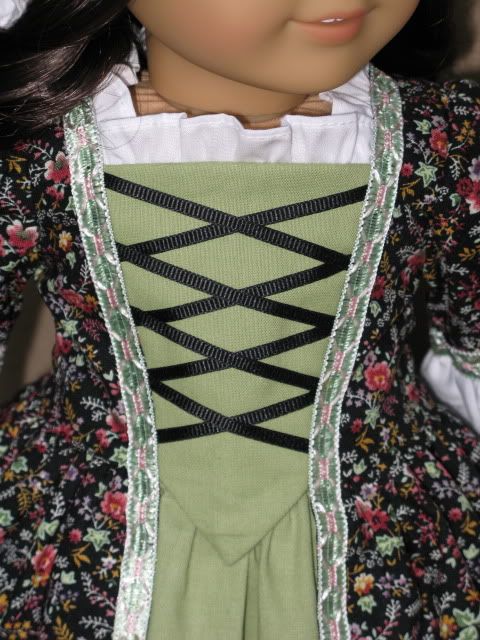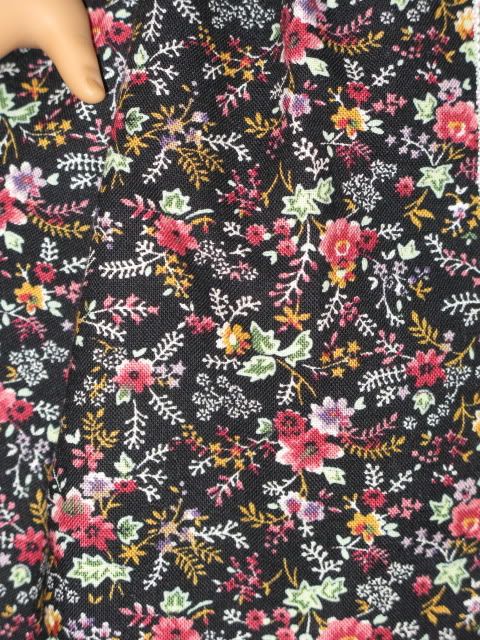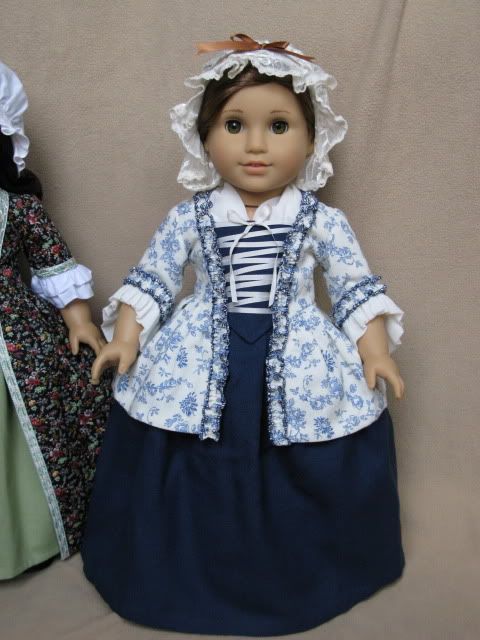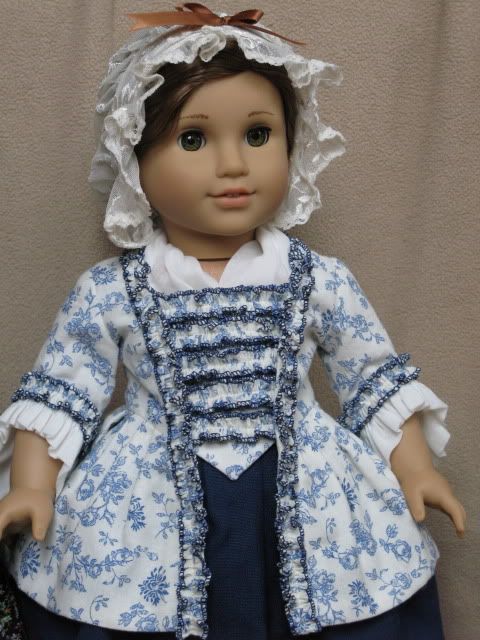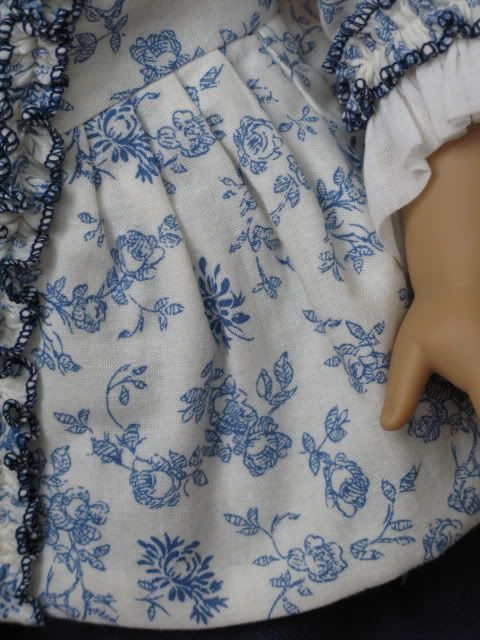Sorry for the delay guys!! Life in the fast lane of schoolwork is pretty fast... Here is our third post of Colonial Historical Theme Week here at The Doll Wardrobe!
Today we are showing you Mary Royall wearing Felicity's Tea Lesson Gown and some close-up shots of the reoccurring Tea Set. Long, long, loooong post ahead!!
Dear American Girl,
If you are going to make a Tea Lesson Gown for Felicity in 2005 to go with the 2005 Felicity TV movie, you should probably have the dress in your toy line match the one seen in the movie.
Love,
Nora Demington ;-P
Yes, it is true that we were really hoping AG would make the movie dress because it is a real heart-stopper as you can see below.... I mean the dress ladies, the dress. Not Ben. Heehee... though he does look nice too...
Gosh the costume department really out-did themselves with that dress. And as you can see, she is wearing it during Tea Lessons...
But AG didn't give us that dress. :-( We got this one below instead.
Which is okay. But the style of the scarf-neckline, sleeves, and bodice really appears more in the 1780s/90s, like right before and around the French Revolution-- when Marie Antoinette was making this type of fashion popular because she often liked to pretend she was just a simple milkmaid down on the farm... at Versailles.... And it was popularized during the French Revolution because it was the dress style of middle class women.
Obviously the fancy fabric and floral embellishments take Felicity's dress out of the peasant-style realm and attempt to make it look more like the TV movie dress. But they really are not enough alike at all in our humble opinion.
Despite this incongruity between toy dress and TV dress, we purchased it for our Mary with hopes that she would like it. So here are our photos of her in the dress...
So what's so important about tea??? Why does Felicity have a tea set??? Well if you have read the books or seen the movie, you probably already know that learning how to properly serve tea was part of a colonial woman's training. Someone who mastered the tea ceremony was ready to run a household, be hospitable to guests, and be a proper wife.
In the colonies the tradition of drinking tea in the afternoon (with snacks) was adopted from British culture, but the English had adopted it via the Portuguese from Eastern cultures like the Arabs, Chinese, and Japanese who had been growing tea and using it during social gatherings for a very long time. The British Empire, in turn, spread its own interpretation of the tea ceremony to its colonies, including America, India, Africa, and so on.
In the colonial period, less than half of the tea coming to the American colonies was grown in India and sold here by the East India Trading Company, an English company. Two-thirds of the tea was grown elsewhere, smuggled illegally into the colonies, and sold for less than the East Indian tea. Obviously the British wanted to stop the smuggling of tea and concentrate profits into the monopoly of the Trading Company.
This led to the Tea Act of 1773 in which the Company was allowed to sell tea directly to the colonies in America without first paying taxes in England. The taxes would then be paid in the colonies, and that cost would be passed on to the colonials. They believed this new Act validated the tea tax put in place in 1767, which they did not like. Not at all.
The hated Townshend Acts of 1767 taxed a variety of products coming into the colonies, including tea. The colonists were furious that they were being forced to pay taxes that they had never voted into existence. "No Taxation without Representation" is their cry that you probably remember from history class. No one in Parliament represented the colonists' interests. These acts infuriated Bostonians (as well as other colonists), tensions rose, and when British troops were called in to enforce the new taxes... riots broke out. The infamous Boston Massacre occurred in 1770, eleven days after Christopher Seider was killed by a customs officer protecting his wife from rioters. Customs officers were the royal employees who collected the taxes on imported goods. Not a fun job at this point in time.
Christopher was only eleven years old when he was killed by the birdshot the customs officer fired through the window of his home into the angry crowd. He is often noted as the first victim of the American Revolution. His death and funeral incited the Bostonians and laid the foundation for the March 1770 riot that led to the deaths of five civilians at the hands of British troops: the Boston Massacre. This early sign of rebellion, 300-400 Bostonians rioting, would culminate in all-out war in 1775.
In 1773, the Tea Act and the taxes that came with it were ignored. Tea was not let into the colonies. Many colonials refused to accept the shipments at the harbors (it sat there rotting), or it was sent back to England once it arrived. In Boston the tea sat on ships and no one showed up to unload it. Officials refused to send it back to England, as the Bostonians wanted them to do. Tensions arose once again, and the Bostonians executed a plan to destroy all three shiploads of tea. On December 16, 1773 a group of colonists boarded the ships and threw all the tea overboard into the harbor. This Boston Tea Party smacked as open rebellion in the face of Parliament and they responded by closing Boston's commerce until they repaid the Trading Company for the tea.
And we all know how that turned out.... An interesting fact for us is that at the Royall House in Medford, Massachusetts (home of Mary and Elizabeth) on display currently is supposedly one of the original Boston Tea Party tea boxes, rescued from the harbor back in 1773. Here is a closer photo of the Royall House... couldn't find a pic of the tea box.... :-( But it is a really awesome house... so here...
Also on display is a chocolate cup retrieved during archaeological excavations at Ten Hills Farm, seen at the top right in the pic below....
Hot chocolate was a very popular and expensive drink during the colonial period, and you might remember that once upon a time Felicity had her own chocolate set, see zee pic below. It was retired in 2005, and why they did that in the year of the Felicity movie I shall never understand. If anyone knows- please enlighten us. You can find it on Ebay today (if you have extra $$$ laying around). :-)
My gosh you made it to the bottom of the post! Congratulations- please stay tuned for Day Four of Colonial Week! The fun continues!



